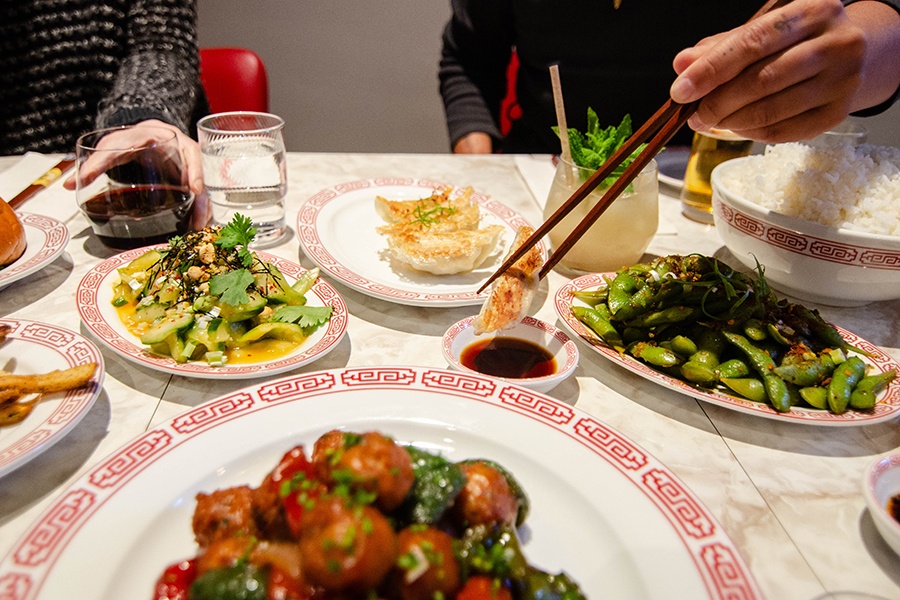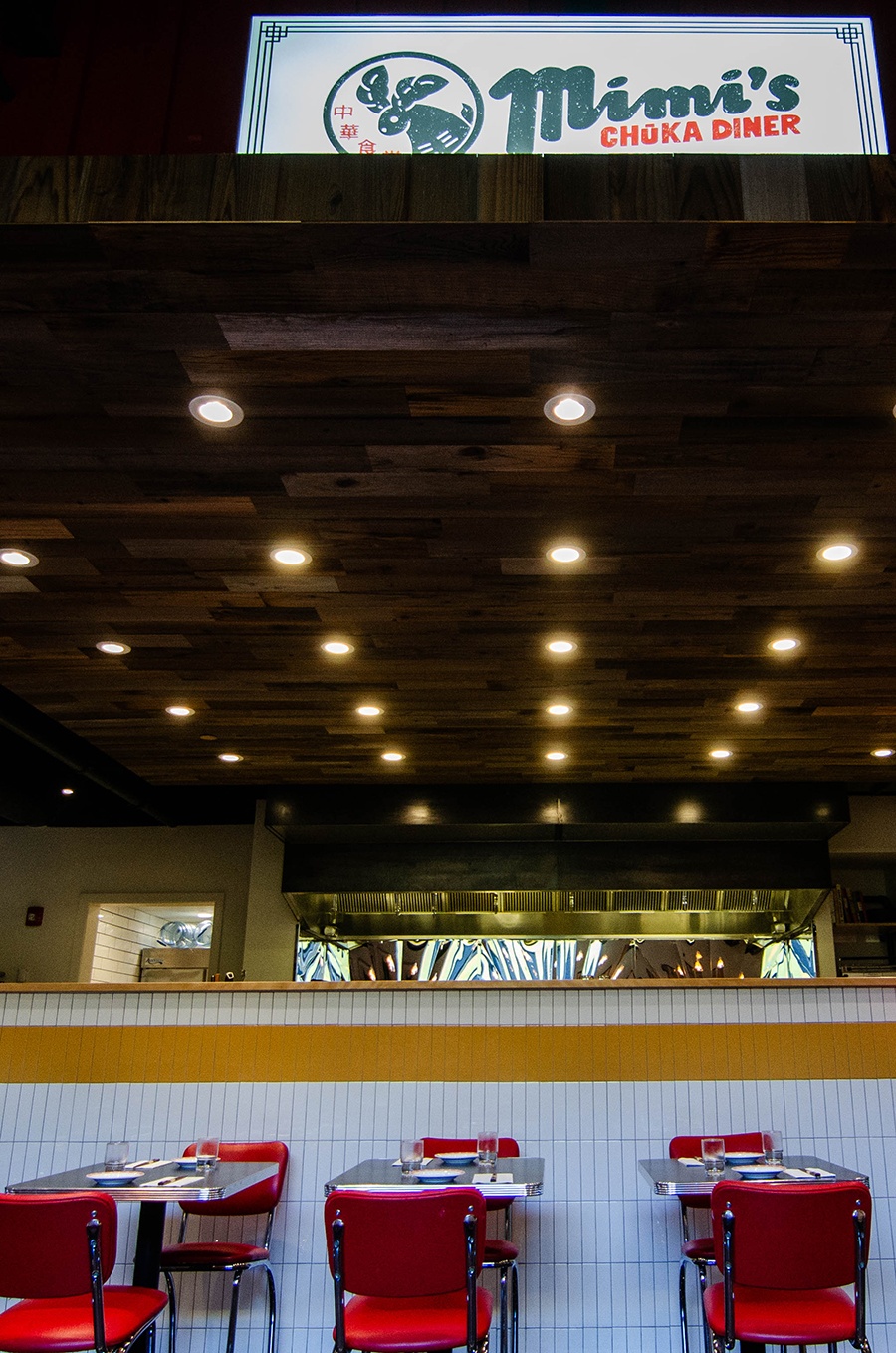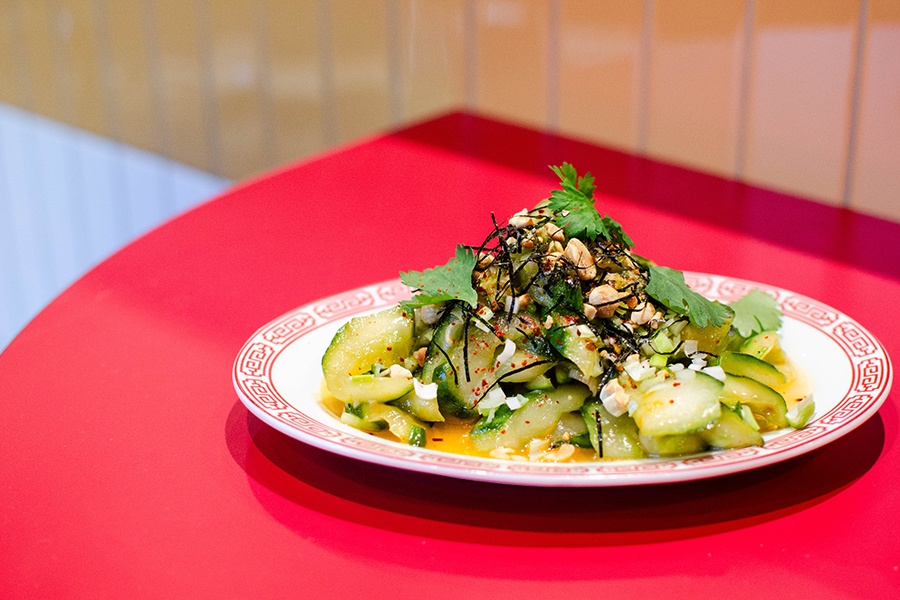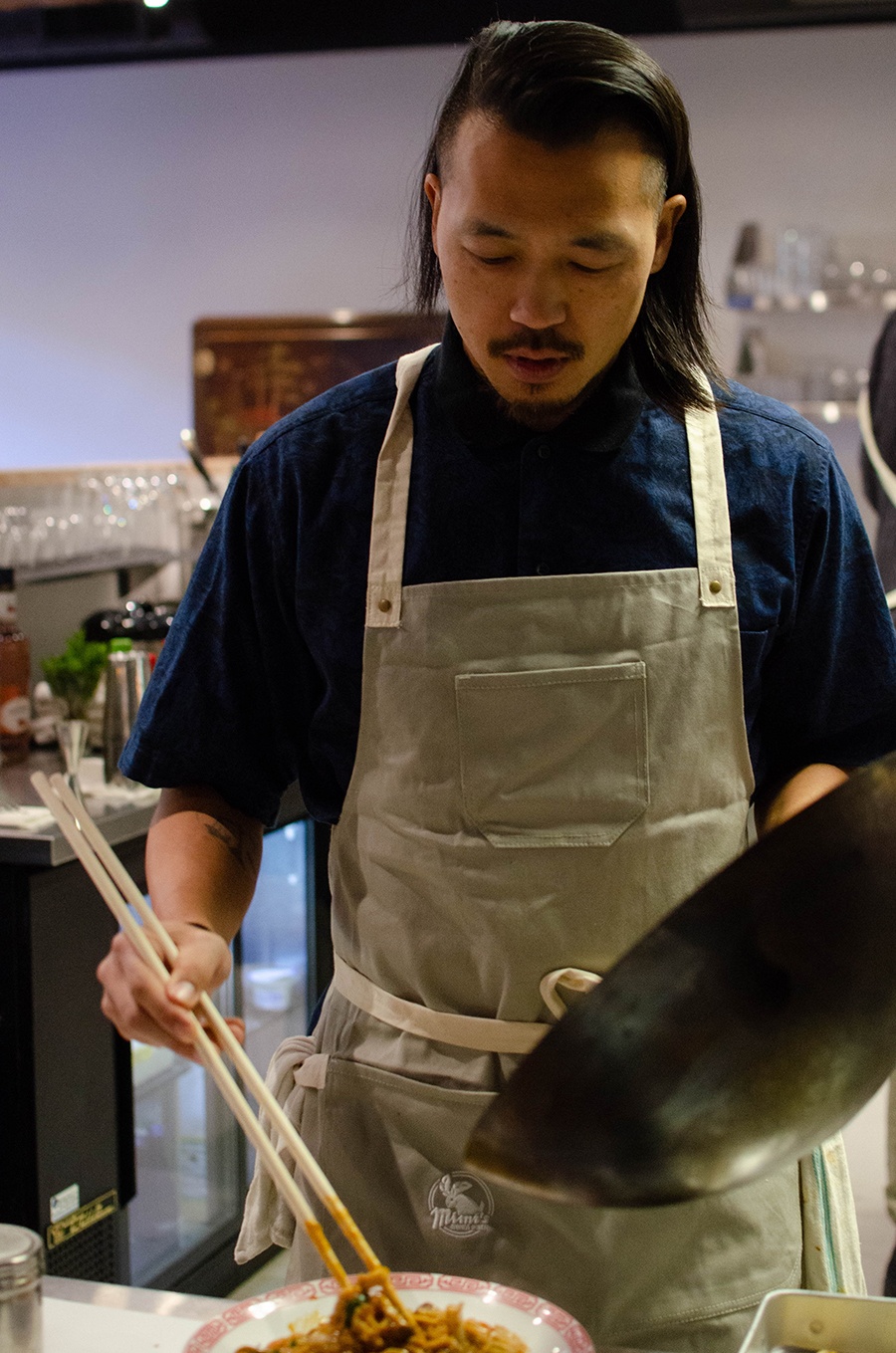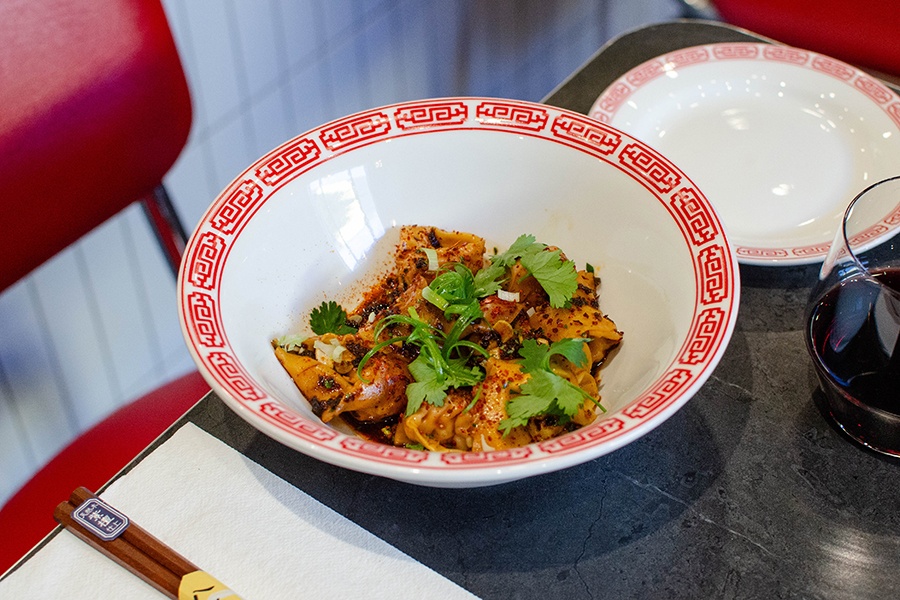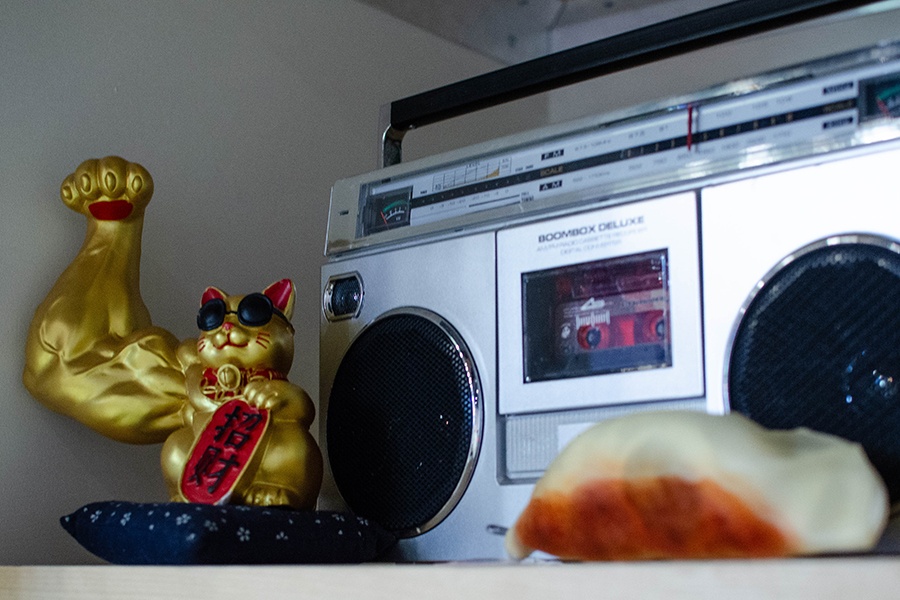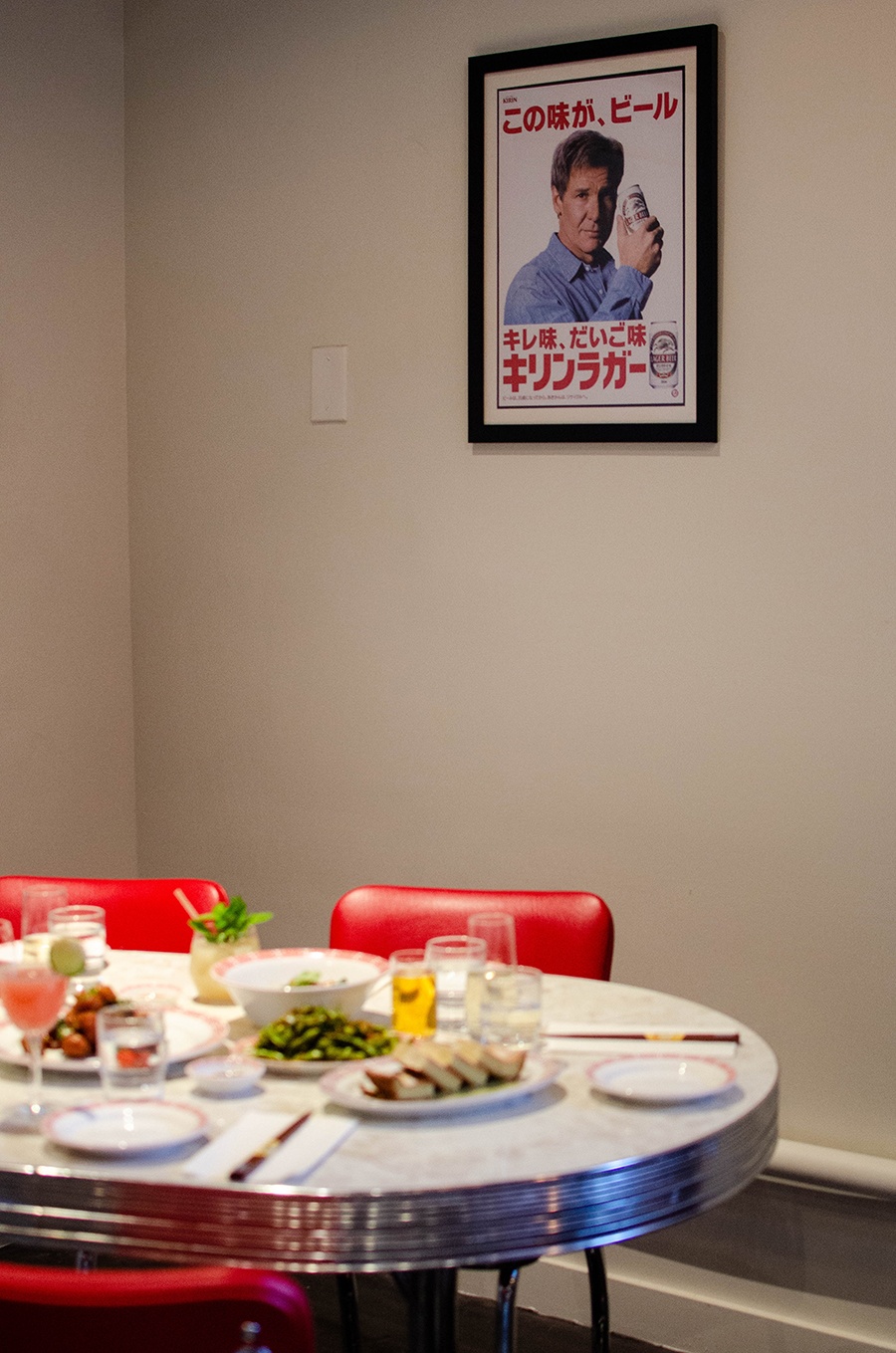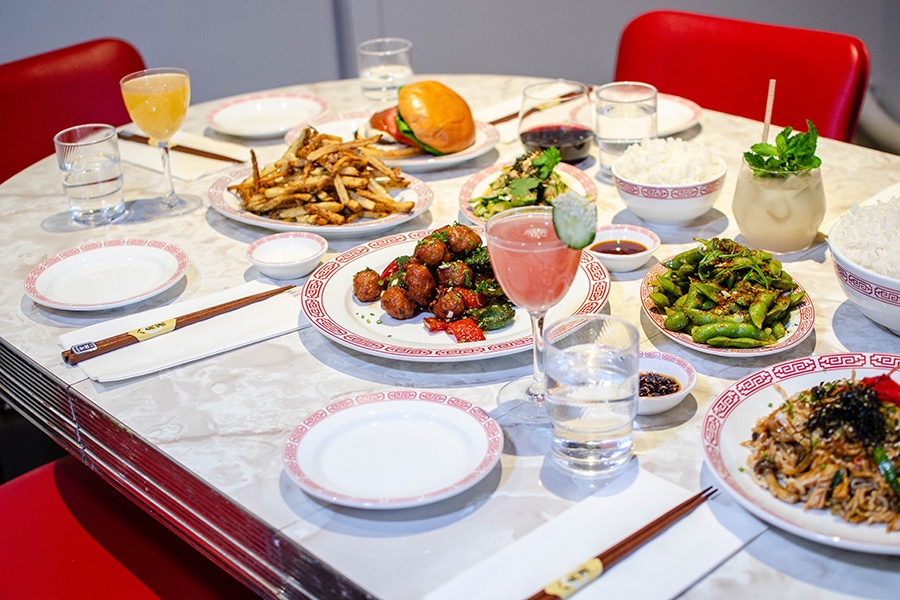Sneak Peek: Mimi’s Chūka Diner Opens Soon in Somerville
Japanese-Chinese cuisine meets American diner influences in this forthcoming restaurant from a longtime pop-up.
From matzo ball wonton soup to a Denver-meets-Japan omelet, Mimi’s Chūka Diner opens in Somerville later this year with a mix of chūka (Japanese-Chinese cuisine) and American diner fare. Announced back in March, it’s the first permanent location for a nearly five-year-old Best of Boston pop-up. Now, founders Ted Woo and Jon Awerman are nearing the finish line at the former Tasting Counter space inside of Aeronaut Brewing. A few tweaks to the menu, a couple of pieces of artwork to hang, and some final permitting hurdles, and it’s go time.
Mimi’s is “a combination of our culinary and cultural heritages, distilled through our experience in the industry,” says Woo, who met Awerman when they both worked at B&G Oysters a decade ago. Woo describes himself as “mostly Chinese but with a little bit of Japanese heritage,” including a mother who grew up in Kobe, Japan and uncles who had Chinese restaurants there. “My first job was washing dishes [at one of the restaurants] when I was visiting over the summer, and I had a lot of that culture imparted on me.” As for Awerman, his grandparents owned several diners in New York City.
It’s this unique blend that inspires Mimi’s in its forthcoming permanent form and has always been the underlying plan, although not fully realized in the pop-up version. Longtime followers of Mimi’s—through its appearances at breweries and elsewhere, and its residency at the now-closed Artifact Cider taproom in Cambridge—have mainly seen the chūka side of things, in part due to kitchen limitations (no griddles, fryers, and other diner essentials, for instance). But having their own home is allowing Woo and Awerman to build the kitchen to fit their needs and finally share their chūka-meets-diner dream.
The duo is packing a lot into the small space, designed by local firm 42 Architecture. Mimi’s essentially has three modes of service: sit-down dining, with the most expansive version of the menu; a small tachinomi (standing bar) for snacking and drinking; and robust takeout options, ready for dining at home or in Aeronaut’s taproom, with, say, a Robot Crush pilsner or Hop Hop & Away Session IPA.
For those unfamiliar with chūka, which is Chinese food cooked in a Japanese style, consider starting with Mimi’s ebi chili. Also known as ebi-chiri, the stir-fried shrimp in chili sauce is a “chūka canon dish,” says Woo. Development of the dish is attributed to Chen Kenmin, who was born in China’s Sichuan province in the early 20th century and later immigrated to Japan. There he opened a Sichuan restaurant, adapting some dishes to the Japanese palate, says Woo.
Gyōza, longtime staples at Mimi’s pop-ups, are also a good example of chūka, derived from the Chinese dumplings called jiaozi. At the restaurant, they’ll be served fried, with either a pork or vegetable filling. (Dumpling lovers should also try Mimi’s Sichuan-style wontons, hand-folded and dunked in an aromatic sauce of house chili oil, aged vinegar, and seasoned soy sauce.)
Mapo tofu, too, is very representative of chūka, with the spiciness of the popular Sichuan Chinese dish getting tempered with a bit of sweet or white miso in the chūka version. “There’s not a lot of spicy food in Japanese cuisine,” says Woo.
“Chūka is all stuff you know,” says Awerman. “It’s noodles, dumplings, steamed buns. It’s all very familiar food with names you might not know, but you know the food, and you love the food.”
Also on the menu: smashed cucumber salad in a house miso vinaigrette; nikudango, sweet and sour meatballs; a NY strip steak with douchi-miso butter, fries, and pickles; garlic noodles; takana chāhan, fried rice with pickled mustard greens; and more. As for that matzo ball wonton soup? “I’m gonna turn [Woo] into a matzo ball lover,” jokes Awerman.
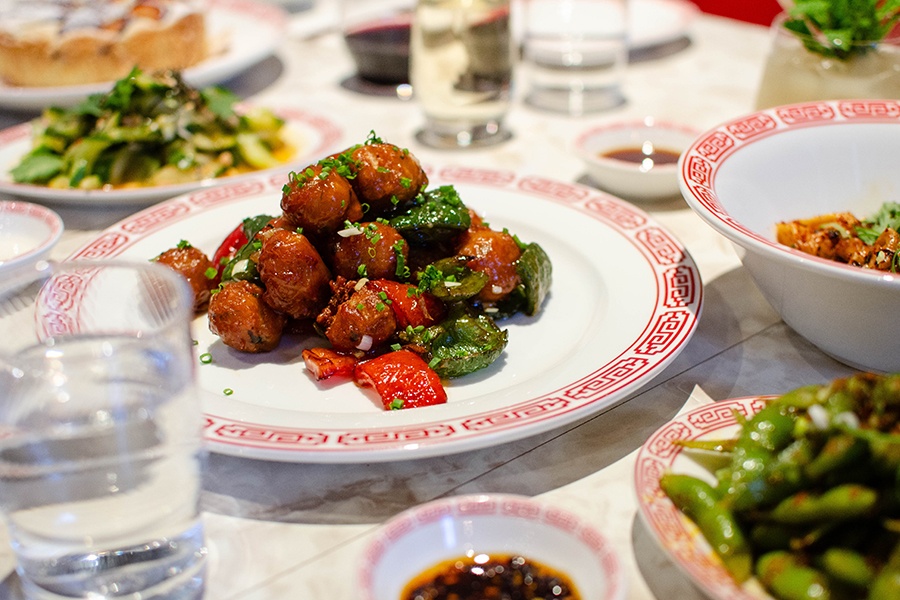
A spread of food at Mimi’s Chūka Diner, including nikudango, sweet and sour meatballs. / Photo by Rachel Leah Blumenthal
Experimenting with the matzo ball soup recipe is part of “a parallel ‘aha’ moment,” as Awerman puts it, that led to the tastiness of their dumpling recipe: using duck fat—inspired by the chicken schmaltz in the soup—instead of pork fat. It’s in line with a “phoenix and dragon” cooking philosophy imparted on Woo by his grandmother, balancing flavor by adding collagen from a different type of meat. If you’re making a Cantonese broth with, for example, pork neck bones, you want to add chicken wings, or if you’re using a chicken carcass for the broth, add pork spareribs and trotters.
The diner influences will be especially apparent on the eventual brunch menu (likely launching around early 2025), with dishes such as “Denver omurice” (Denver omelet meets Japanese omelet), and a bagel and lox plate, featuring house-cured fish (Awerman is experienced in fish-curing from his time at B&G) and possibly bagels made in-house, too. “It’s been kind of our mode of operation to take it way farther than we have any business doing, in terms of production, and then dialing it back to what’s actually feasible,” says Awerman with a laugh, so the bagels might end up coming from an external source.
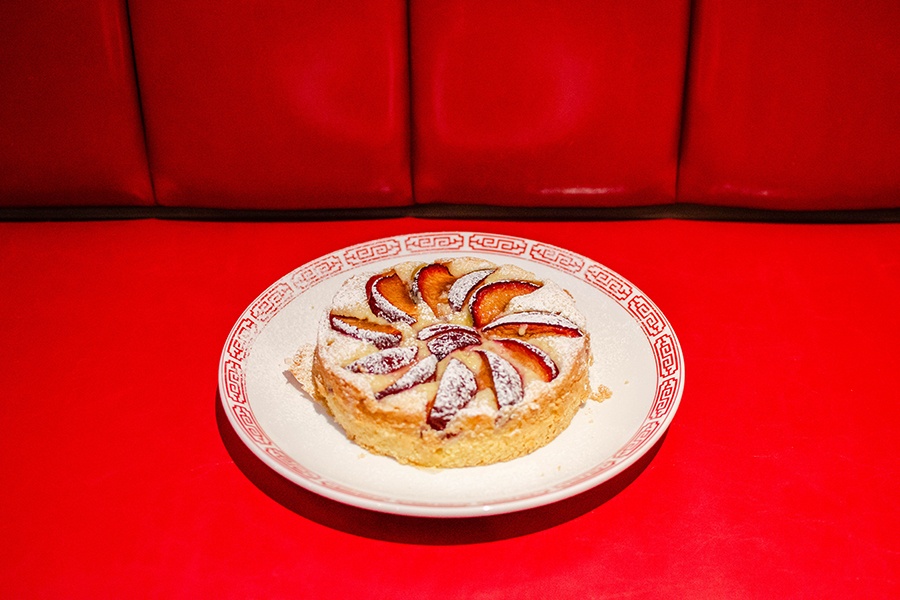
Mimi’s Chūka Diner’s Austrian plum cake. “Dessert is one of the areas we’re going to be able to branch out and incorporate more of the diner stuff, like cakes and pies,” says Awerman. / Photo by Rachel Leah Blumenthal
A shorter, snackier menu will be offered at the standing bar, with some exclusive items and some overlap with the sit-down selection. The idea is that “you’re not going to be there for two hours,” says Woo; you’ll just have some bites with a drink or two. “We just want to encourage people to get used to the idea of eating something with their drink; in America, it’s very common to just drink.” In fact, the standing bar menu is a three-tiered system where each predetermined set is a simple add-on to the price of your drink. One set—arare (Japanese crackers), boiled peanuts, and pickles—is free with your drink, or pay $6 for nori fries, curried edamame, and nikudango skewers, or $12 for a burger, kushiage set (skewers of fried meats and vegetables), and vegan mapo tofu. (The items are available à la carte as well.)
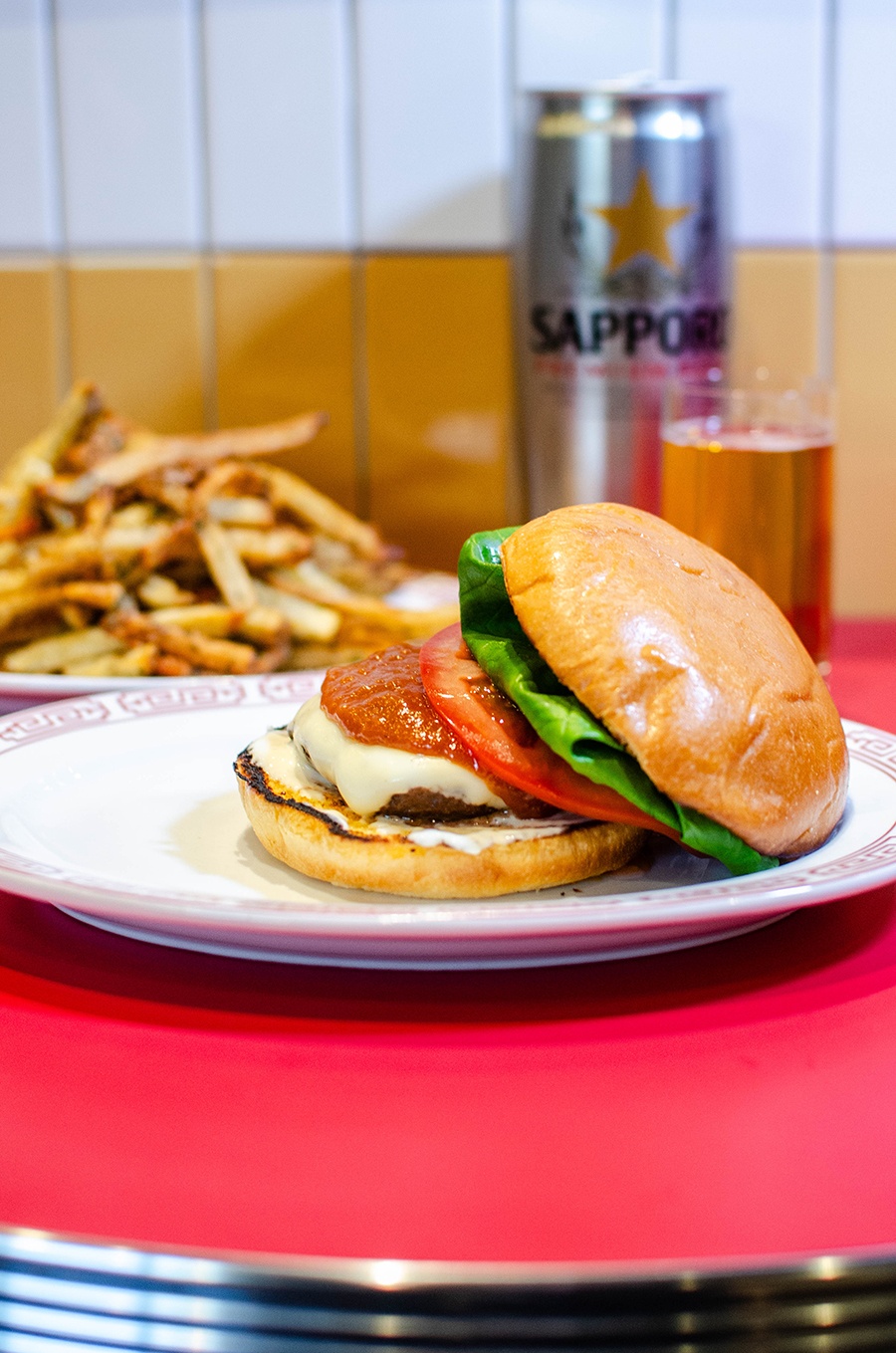
Mimi’s Chūka Diner burger and nori fries. “I love B&G’s fries,” says Woo. “I think a lot of people do. These are not quite like that, but in spirit they are: simple, thin-cut fries with seasoning.” / Photo by Rachel Leah Blumenthal
The drink list is food-friendly, including some beers (mostly lagers); a “lowbrow, highbrow” mix of sake, says Woo; value-driven wines (“some natural stuff, some orange options, grower Champagnes,” and more); and some batched cocktails. Iruma Shibuya, bar manager at Backbar nearby in Union Square, is consulting on the cocktail list, with drinks such as a yuzu mai tai (an “absolute banger,” says Woo) and a play on a Bone Crusher.
It’s been a long road, but with the restaurant on the verge of opening, Woo and Awerman are excited to share their vision with diners—and it really is theirs. “We didn’t seek big investors because we wanted as much control in the company as possible,” says Woo, noting that in their experience in the industry, they’ve seen how investors can assert control over various decisions years down the line, and they wanted to avoid that. “It’s been very grassroots, just him and me and our families helping us out,” says Awerman.
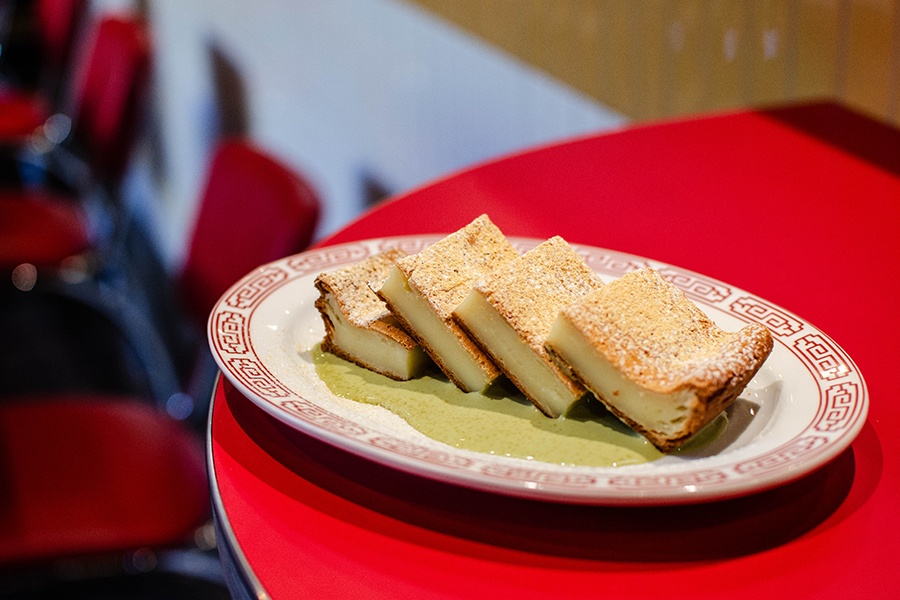
Mimi’s Chūka Diner’s butter mochi. “It’s of Hawaiian origin but with Chinese and Filipino influence,” says Woo. “This is a recipe my mother made growing up, so a little bit of heritage there.” / Photo by Rachel Leah Blumenthal
“For small business owners and operators like us, there’s so much physical work and effort behind the scenes that people don’t know about,” says Woo. “Appreciate your local restaurants.”
The best way to do that? “Come by, eat, and have fun,” says Awerman.
Opening for takeout only starting on November 19, 2024; full opening coming later in 2024. 14 Tyler St. (inside Aeronaut Brewing Company), Somerville, mimischukadiner.com.
